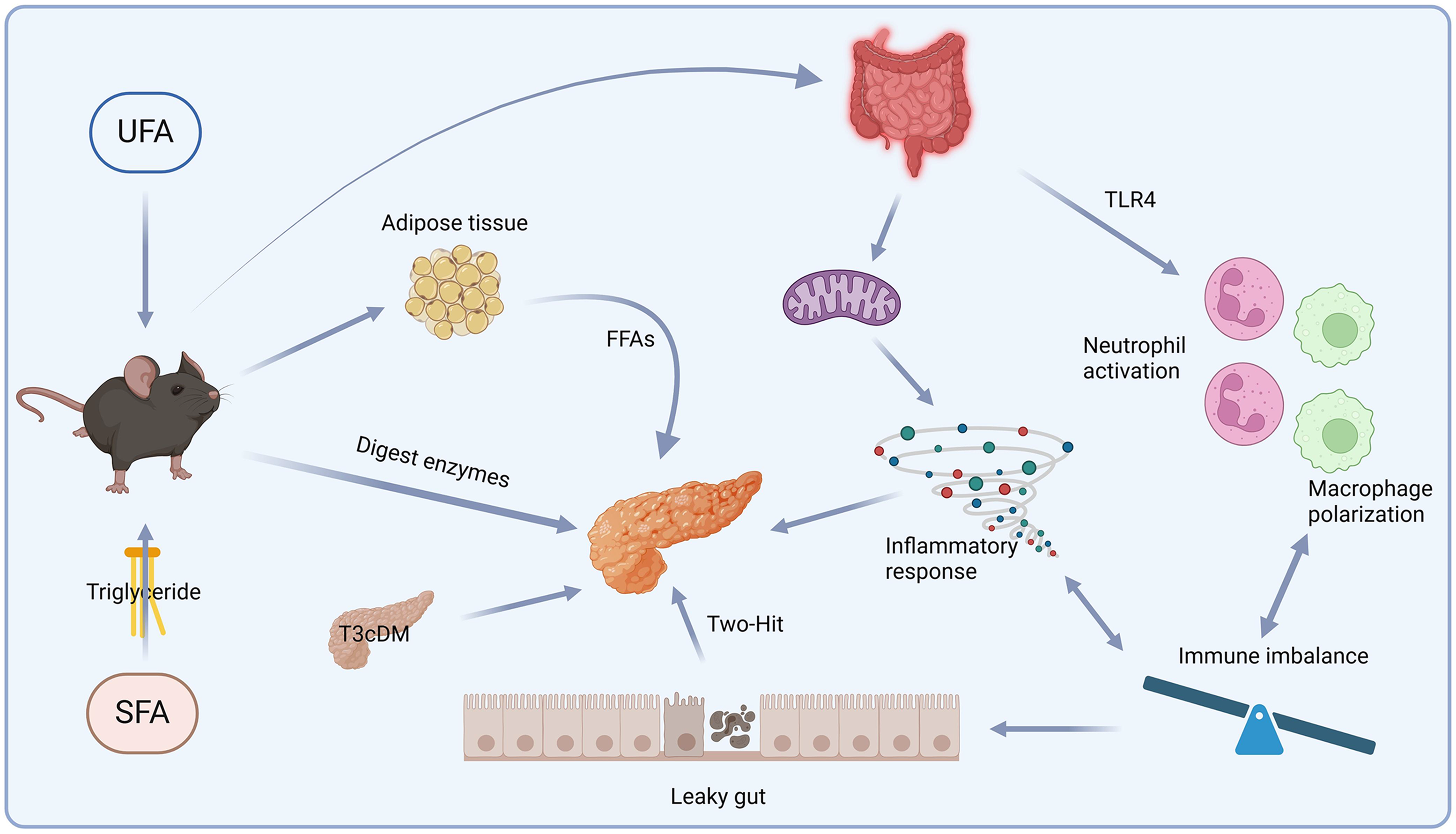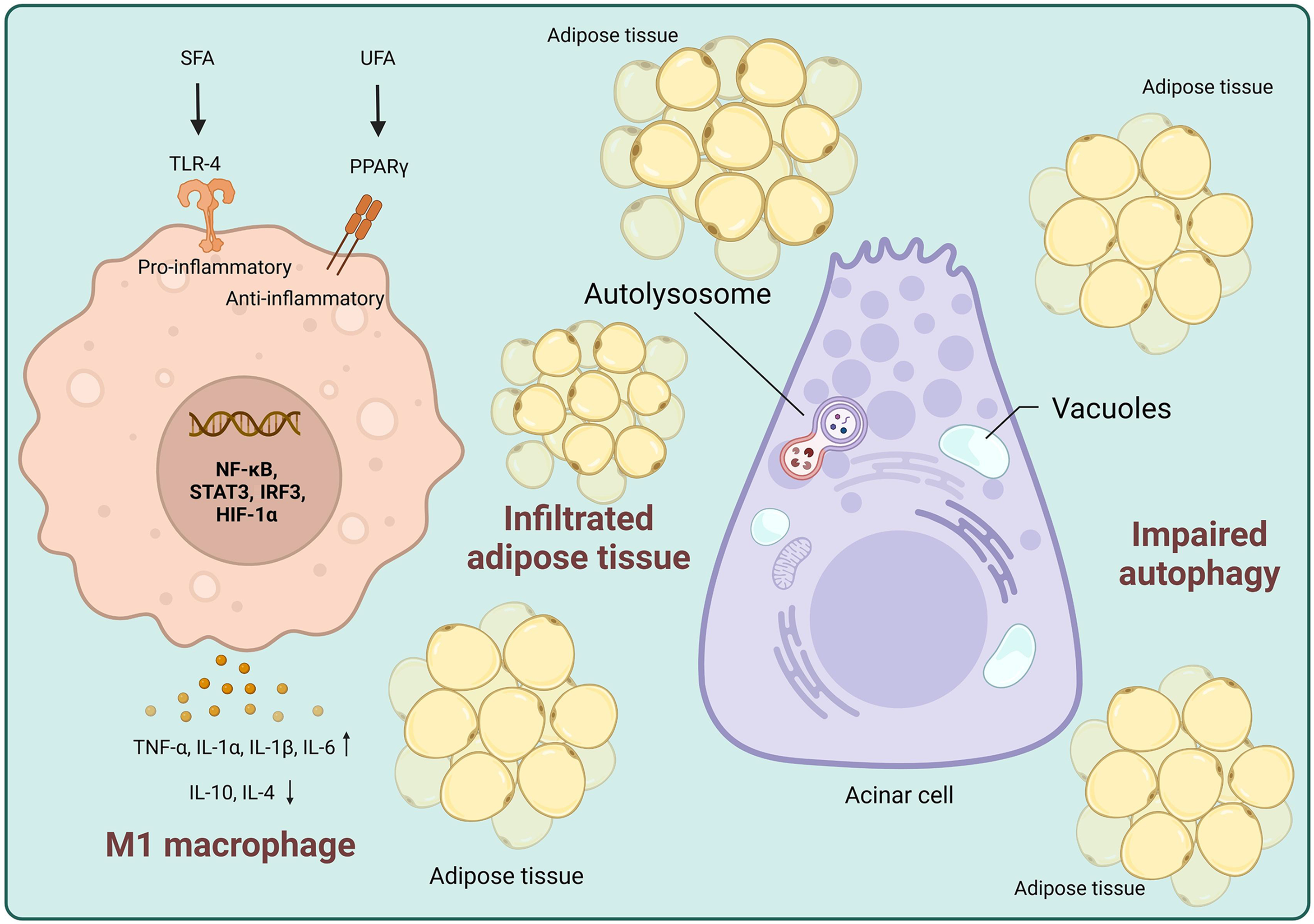Copyright
©The Author(s) 2025.
World J Gastroenterol. Jun 14, 2025; 31(22): 106575
Published online Jun 14, 2025. doi: 10.3748/wjg.v31.i22.106575
Published online Jun 14, 2025. doi: 10.3748/wjg.v31.i22.106575
Figure 1 Fatty acid intake induces pancreatic lipase release to the intestine and degrades adipose to free fatty acids, stimulating pancreatitis.
Saturated fatty acids combined with Toll-like receptor 4 to activate the immune response and increase oxidative stress, leading to an inflammation storm. Fatty acid alters gut permeability, damaging the gut and leading to acinar cell damage. Fatty acids significantly contribute to the progressive destruction of pancreatic β-cells, a process called lipotoxicity. UFA: Unsaturated fatty acid; TLR4: Toll-like receptor 4; FFAs: Free fatty acids; SFAs: Saturated fatty acids. Created in BioRender (Supplementary material).
Figure 2 Saturated fatty acids directly combine with Toll-like receptor 4 to stimulate nuclear factor-κB activation, which leads to increased cytokines, accelerated M1 macrophage polarization, and impaired acinar cell autophagy.
UFA: Unsaturated fatty acid; TLR4: Toll-like receptor 4; FFAs: Free fatty acids; SFA: Saturated fatty acid; PPARγ: Proliferator-activated receptor gamma; TNF-α: Tumor necrosis factor α; IL: Interleukin; NF-κB: Nuclear factor-κB. Created in BioRender (Supplementary material).
- Citation: Wang YX, Ge P, Chen HL. Induction of hyperlipidemic pancreatitis by different fatty acids: A narrative review. World J Gastroenterol 2025; 31(22): 106575
- URL: https://www.wjgnet.com/1007-9327/full/v31/i22/106575.htm
- DOI: https://dx.doi.org/10.3748/wjg.v31.i22.106575










